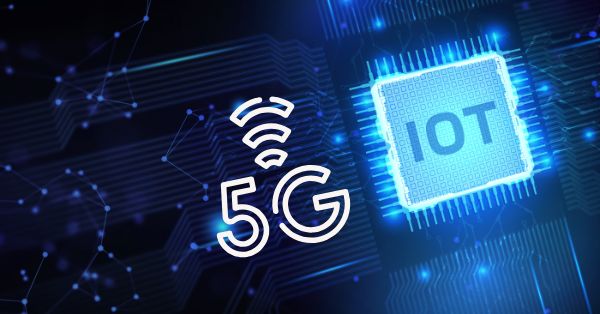As the mobile networking landscape evolves, the Open Radio Access Network (O-RAN) continues to be a critical area of innovation and growth. During the O-RAN Alliance Summit at MWC 2025, key developments and strategic directions emphasized how the industry is moving towards more open, intelligent, virtualized, and fully interoperable RAN solutions.
Core Principles Driving O-RAN Innovation
The core principles that guide O-RAN—openness, intelligence, virtualization, and interoperability—remain as relevant today as they were when first articulated. These principles are foundational to the ongoing transformations within the mobile networking industry.
The Impact of Openness in O-RAN Ecosystems
Openness in O-RAN facilitates a broader vendor ecosystem, fostering innovation and reducing dependency on single vendors. This approach not only enhances competition but also helps in faster implementation of new technologies and cost reductions for mobile operators. For example, smaller tech startups can now compete with established telecom giants, leading to more diverse and innovative solutions in the marketplace.
Further examples of how openness impacts the industry can be seen in the increased collaboration across different technology providers, enabling a more robust and diverse supply chain. This can lead to better standardization across devices and network components, which in turn enhances consumer choice and network reliability.
Leveraging AI for Smarter O-RAN Networks
Embedding artificial intelligence (AI) across O-RAN architectures enhances network efficiency and service quality. AI enables more dynamic resource allocation, predictive maintenance, and enhanced customer experience through improved network reliability and performance. This is particularly evident in automated anomaly detection systems that preemptively identify and resolve network issues before they impact users.
Moreover, AI’s role in O-RAN extends to sophisticated traffic steering and load balancing, which can optimize the usage of network resources and improve user experience during peak traffic periods. AI’s ability to analyze vast amounts of data in real-time supports these functionalities, making networks smarter and more responsive.
The Role of Virtualization in O-RAN
Virtualization technologies are crucial as they allow network functions to run on generic hardware platforms, reducing costs and improving flexibility in network management and deployment. This shift plays a critical role in the scalability and agility of network services, as evidenced by cloud RAN (C-RAN) deployments which offer enhanced data processing capabilities and energy efficiency.
Additionally, the push towards software-defined networking (SDN) within the context of O-RAN virtualization offers further benefits, such as greater control over traffic flow and enhanced security measures, enabling a more adaptable network environment.
Enhancing O-RAN with Interoperability
Ensuring that different components of the network can work seamlessly together, interoperability is vital for the practical deployment of O-RAN in diverse and complex network environments. It supports the integration of multi-vendor environments and fosters a healthy, competitive market space. This is crucial in environments where legacy systems need to communicate with newer, more advanced technology platforms.
The importance of interoperability cannot be overstated, as it facilitates the deployment of cross-vendor services and applications, enhancing the ability to innovate and adapt to market needs quickly.
Progress and Hurdles in O-RAN Development
While O-RAN has made significant strides, there are several areas where focused efforts are needed to overcome existing challenges and unlock full potential.
Prioritizing Security in O-RAN Frameworks
With the increased adoption of open and virtualized network elements, security remains a paramount concern. O-RAN initiatives aim to incorporate security by design, addressing potential vulnerabilities early in the development phase and ensuring robust protection against threats. Instances of cyber attacks on communication networks underline the critical need for integrated, end-to-end security solutions.
Effective security in O-RAN not only involves preventing external threats but also ensuring data integrity and privacy across the network. With the implementation of advanced cryptographic techniques and continuous security updates, O-RAN can maintain a high level of trust among users and operators.
Scaling O-RAN for Global Deployment
Achieving scalability in commercial deployments is crucial. Efforts are ongoing to enhance the performance and reliability of O-RAN systems to ensure they can handle large-scale operations typical of major network providers. This includes the use of scalable cloud architectures to manage increased network loads without degradation in service quality.
To further support scalability, network slicing is becoming a key strategy within O-RAN frameworks. This allows operators to segment the network to meet specific service requirements, optimizing resources and potentially opening up new business models.
Optimizing O-RAN with Advanced AI
Integrating AI effectively within the RAN requires continuous refinement of algorithms and models to adapt to real-world operational conditions. This integration aims to optimize network operations and improve the responsiveness and adaptability of services. For instance, AI-driven predictive analytics can forecast network traffic and dynamically adjust bandwidth allocations.
AI integration also extends to self-healing mechanisms where the network can autonomously detect and rectify faults, significantly reducing downtime and improving overall service reliability.
Future Directions in O-RAN Technology
The roadmap for O-RAN is set to align closely with emerging technologies and industry trends, particularly with the progression towards 6G.
Strengthening O-RAN with 3GPP Collaboration
O-RAN’s collaboration with the 3rd Generation Partnership Project (3GPP) exemplifies a concerted effort to ensure that future mobile network standards incorporate the principles of openness and intelligence from the ground up. This partnership will likely yield new standards that facilitate more advanced, user-centric network services.
Implementing Zero Trust in O-RAN Security
As security concerns grow, the adoption of zero trust architectures in O-RAN designs is becoming increasingly important. These architectures assume no implicit trust is granted to assets or user accounts based solely on their physical or network location or based on asset ownership (enterprise or personally owned). Implementing such models will be essential for protecting against internal and external security threats.
Advancing O-RAN with Innovative Antenna Tech
Innovations such as massive MIMO (Multiple Input Multiple Output) are critical focus areas for O-RAN. Enhancing these technologies will be pivotal in managing the higher frequency bands and vast data volumes expected with future network standards, including 6G. These advancements are anticipated to dramatically improve network capacity and efficiency.
The O-RAN Alliance, with its commitment to revolutionizing mobile network infrastructure through innovation and collaboration, is setting the stage for the next generation of mobile communications. As the industry looks towards an increasingly connected and digital future, the principles and initiatives of O-RAN will play a crucial role in shaping this landscape to be more open, intelligent, and secure.



























